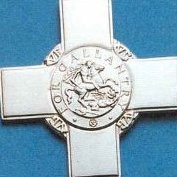TransAsia plane crashes in Taiwan with 58 people on board; 2 killed
-
Recently Browsing 0 members
- No registered users viewing this page.
-
Topics
-
-
Popular Contributors
-
-
Latest posts...
-
185
Report Thailand Tightens Grip on Retirement Visas Amid Wealth Shift
Just for your information. If you can prove that the money for th land, tractor, houses etc. came from your bank account she will have to reimburse you. She can’t just take everything and boot you out. If she doesn’t have the money she’ll have to sell, which means she most likely ends up with nothing after you got your cut! Also, the corrupt immigration place isn’t the only place you can go to! -
32
Future UK Demographics Could See White British Minority by 2063, Study Suggests
I remember very vividly singing hymns every morning with the 'purple headed mountain' lyric getting much giggles to my 10 year old brain. Was this indoctrinating? Oh hell yes. Calm down. -
0
Abandoned Thai Boy Given New Home After Teacher’s Viral Plea
Abandoned Thai Boy Given New Home After Teacher’s Viral Plea A 13-year-old Thai boy abandoned by his parents and living in poverty with his elderly great-grandparents now has a new home, thanks to a teacher’s plea and community support. Living without a roof, clean water, or electricity, his situation sparked action from social agencies and donors. The Ministry of Social Development and local officials provided him with a safe, clean home and basic necessities. His teacher expressed gratitude and promised continued updates, as the boy begins a new chapter filled with hope and security. -
22
Trump threatens to cut Musk's government contracts as their public feud escalates.
Ya, but look who appointed / empowered them all..... What else could have been expected! -
61
-
0
Chinese Fraud Suspect Escapes Pattaya Police by Jumping from Window
Chinese Fraud Suspect Escapes Pattaya Police by Jumping from Window A Chinese fraud suspect, Li Jian, escaped custody by leaping from a second-floor window at Pattaya Police Station while officers were briefly distracted. Li had been arrested at Don Mueang Airport while trying to flee to Vietnam after allegedly scamming a fellow Chinese national out of 38,712 USDT (approx. 1.26 million baht). Despite injuries from the fall, Li managed to flee, prompting a manhunt and raising serious concerns over police station security. Authorities are now under pressure to recapture him and answer for the embarrassing breach.
-
-
Popular in The Pub







.thumb.jpeg.d2d19a66404642fd9ff62d6262fd153e.jpeg)



Recommended Posts
Create an account or sign in to comment
You need to be a member in order to leave a comment
Create an account
Sign up for a new account in our community. It's easy!
Register a new accountSign in
Already have an account? Sign in here.
Sign In Now